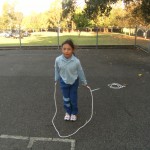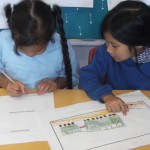Written by Mutu and Haley
Each class at Belmore South had to learn about 4 famous Australians and then choose one to be their class name. We had to choose between Graeme Clark, Marie Bashir, Deborah Mailman and Dick Smith.
It was a hard choice but we were only allowed to choose one. Graeme Clark and Dick Smith were very close. We had a bit of a debate about why people chose them. Some people changed their votes and Graeme Clark won. Most people chose him because of his great work for deaf people. We think he is a great role model and an inspiration to everyone.
For his great work he received some very prestigious awards.
Here is some information about Graeme Clark
Why is he a famous Australian?
Professor Graeme Clark invented the Bionic Ear with a team of scientists in the 1970s. They worked in Melbourne, Australia.
The Bionic Ear is worn by over 100,000 deaf people in over 80 countries.
How does the Bionic Ear work?
The Bionic Ear is properly called a cochlear implant. It is an artificial hearing tool. The Bionic Ear helps a deaf person to hear another person speak.
There are 2 parts to the Bionic Ear.
One part is placed under the skin behind a person’s ear. This is done in a hospital during an operation. The parts placed under the skin are the electronic equipment needed to control the flow of electricity into the ear and the equipment needed to change electrical signals into speech.
The second part is worn on the outside of the body. There is a microphone to pick up the voice of the person speaking, a speech processor which turns the voice sounds into electrical signals and a transmitting coil which sends the signals to the equipment inside the deaf person’s ear.
Why invent the Bionic Ear?
Professor Graeme Clark’s father had a hearing problem and didn’t have a very good hearing aid. Clark from young age liked conducting experiments and this interest led to him doing a degree in medicine. He entered into a partnership with a friend of his father’s, learning to be an expert nose and plastic surgeon.
However it still frustrated him seeing profoundly deaf people come and go realising that he couldn’t help them. But then he read an article by an American surgeon and was inspired to go and research electrically stimulating the hearing. He then decided to leave and go and live as a research student at the University of Sydney. Money and financial successes were unimportant to him. This began his research path to inventing the Bionic Ear.






























